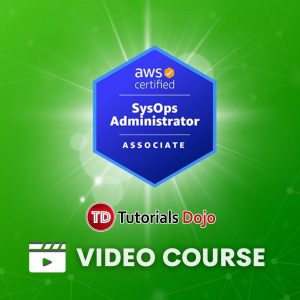claude
Forum Replies Created
-
Other small error spotted : Section-Based – Migration Planning (SA-Professional)
You are working in a major robotics company as a Cloud Engineer, and the team is migrating all of the web applications hosted on the on-premises network to the AWS cloud. However, some of these apps only support TCP, which means that they will only work on ports 80 and 8080. Your manager also requires you to use an ELB and Auto Scaling to ensure that the traffic is routed properly and ensure scalability of the application.
In this scenario, which listener configuration would you create on the ELB?
The ELB and instance protocol will be configured to ports HTTP:80 and HTTP:8080.
Launch and configure an Application Load Balancer with ports HTTP:80 and HTTP:8080 with instance protocols set to TCP:80 and TCP:8080 respectively.
Launch and configure a Classic Load Balancer with instance protocols set to TCP:80 and TCP:8080.
Launch and configure an Application Load Balancer with ports HTTP:80 and HTTP:8080, while the instance protocols are set to HTTPS:80 and HTTPS:8080 respectively.
Hence, the option that says: Launch and configure a Classic Load Balancer with instance protocols set to TCP:80 and TCP:8080 is correct because for the ELB to route the traffic correctly, it should be configured with ports TCP:80 and TCP 8080. For the backends as well, the ports that should be configured must be TCP:80 an TCP:8080.
The following options are all incorrect as both the ELB and instance protocol must be configured for ports TCP:80 and TCP:8080:
– Launch and configure an Application Load Balancer with ports HTTP:80 and HTTP:8080, while the instance protocols are set to HTTPS:80 and HTTPS:8080 respectively
– Launch and configure an Application Load Balancer with ports HTTP:80 and HTTP:8080 with instance protocols set to TCP:80 and TCP:8080 respectively
– Launch and configure a Classic Load Balancer with ports set to HTTP:80 and HTTP:8080.
last wrong answer does not belong to the proposed answer and looks very correct.
Claude
-
This reply was modified 3 years, 10 months ago by
 claude.
claude.
-
This reply was modified 3 years, 10 months ago by
-
other (small) error spotted : Migration Planning (SA-Professional)
You are working in a major robotics company as a Cloud Engineer, and the team is migrating all of the web applications hosted on the on-premises network to the AWS cloud. However, some of these apps only support TCP, which means that they will only work on ports 80 and 8080. Your manager also requires you to use an ELB and Auto Scaling to ensure that the traffic is routed properly and ensure scalability of the application.
proposed answers :
The ELB and instance protocol will be configured to ports HTTP:80 and HTTP:8080.
Launch and configure an Application Load Balancer with ports HTTP:80 and HTTP:8080 with instance protocols set to TCP:80 and TCP:8080 respectively.
Launch and configure a Classic Load Balancer with instance protocols set to TCP:80 and TCP:8080.
Launch and configure an Application Load Balancer with ports HTTP:80 and HTTP:8080, while the instance protocols are set to HTTPS:80 and HTTPS:8080 respectively.
in explanations :
Launch and configure a Classic Load Balancer with instance protocols set to TCP:80 and TCP:8080 is correct
The following options are all incorrect as both the ELB and instance protocol must be configured for ports TCP:80 and TCP:8080:
– Launch and configure an Application Load Balancer with ports HTTP:80 and HTTP:8080, while the instance protocols are set to HTTPS:80 and HTTPS:8080 respectively
– Launch and configure an Application Load Balancer with ports HTTP:80 and HTTP:8080 with instance protocols set to TCP:80 and TCP:8080 respectively
– Launch and configure a Classic Load Balancer with ports set to HTTP:80 and HTTP:8080.
the last wrong answer is not in the proposed answer, and looks correct to me.
Claude.
-
Hello, thank you for your answer.
You are perfectly right, anyway the elimination process works in that case.
I even think you should not update the question as I already passed pro and specialty exams and lots of questions have this kind of missing points.
Claude.
-
Hi Kenneth,
thanks for your answer, it was super usefull.
you are right, I missed that point : a Bucket Policy is not an IAM Policy…
I fell in the trap.
Regards,
Claudio
-
Hi JB,
Perfectly clear now!
Thanks again for both explanations and provided links.
I had completely missed this topic.
Regards,
CB
-
Hello kung, yes, I fully agree with your option. But it’s definely not what is stated in the quizz.
“Associate this role to all the on-premises servers”
BR,
CB.
-
Hi JB,
thanks for fast reply & explanations.
It really helps in my learning.
Regards,
CB
-
Thanks, for the reply. Sorry for the -so long dicussion- for a -so small issue- my goal was not to point at little issues in your system but to contribute to make better if I could.
You re doing an amazing job!
C.
-
Hi, yes I agree, quiete confusing but please carefully read
proposed answers :
1/The ELB and instance protocol will be configured to ports HTTP:80 and HTTP:8080.
2/Launch and configure an Application Load Balancer with ports HTTP:80 and HTTP:8080 with instance protocols set to TCP:80 and TCP:8080 respectively.
3/Launch and configure a Classic Load Balancer with instance protocols set to TCP:80 and TCP:8080.
4/Launch and configure an Application Load Balancer with ports HTTP:80 and HTTP:8080, while the instance protocols are set to HTTPS:80 and HTTPS:8080 respectively.
in the correction we have
correct : Launch and configure a Classic Load Balancer with instance protocols set to TCP:80 and TCP:8080 = matches 3/
incorrect
– Launch and configure an Application Load Balancer with ports HTTP:80 and HTTP:8080, while the instance protocols are set to HTTPS:80 and HTTPS:8080 respectively matches 4/
– Launch and configure an Application Load Balancer with ports HTTP:80 and HTTP:8080 with instance protocols set to TCP:80 and TCP:8080 respectively matches 2/
– Launch and configure a Classic Load Balancer with ports set to HTTP:80 and HTTP:8080 should match 1/ ? maybe this is the confusing part for me.
Claude.
-
agreed but here the explanation is based on an answer that does not belong to the proposed ones.
Claude


